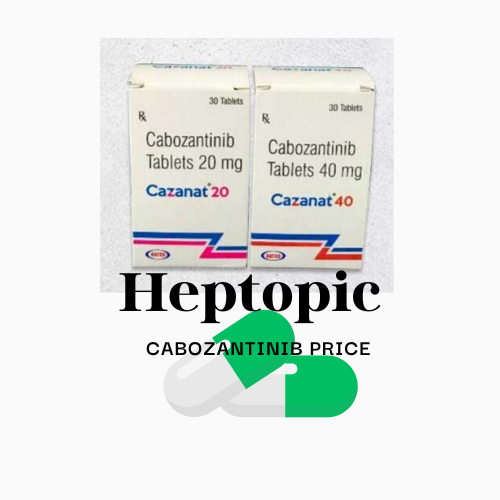Decoding the High Cost of Cabozantinib: What’s Behind the Price?
Cabozantinib is a type of targeted therapy for treating a range of cancers. It has recently been in the news because of its high cost. With a price tag of around $8,436 for just one 28-day cycle, this drug certainly doesn’t come cheap. Exactly what does the cabozantinib price entail, and why could it be so expensive?
Cabozantinib Cost Components
The single largest driver of cabozantinib’s overall cost in this case was directly the drug acquisition cost, which had the largest impact on cost per patient. The NCBI Bookshelf described the submission price for cabozantinib at $301.2943 per tab, which would come out to $8,436 for a 28-day cycle, a large number. It should be an emphasis, though, that these costs are only one part of the total cost of treatment, with further expenses often of equal or greater size having to be factored in for administration, monitoring, and possible side effects.
The Role of Research and Development Costs
A major determinant of the high cabozantinib price lies in the research and development. It could be quite costly in getting a new drug to market, sometimes even running into $1 billion to $2.6 billion a drug. These costs include expenses for clinical trials, regulatory approval, and the many failed candidates that never come to market.
Impact of Manufacturing and Distribution Costs
Apart from research and development, cabozantinib includes the costs related to the production process and the chain of distribution. The variables affecting these costs principally include the complexity of the drug, the size of the facility where it is produced, and how efficient the distribution network is. For example, specialised equipment and high-quality control measures will increase production costs. Other aspects are a distribution geography dimension that includes transportation, storage, and in-country regulatory compliance all of which add to the final cost. These factors ultimately help to determine the final cost of the drug for patients and the health system.
What is critical is that although these costs are sizable, in most cases, they usually make up a really small fraction of the final price. Other elements include marketing, administrative costs, and profit margins that continue to inflate the cabozantinib price.
How Competition and Demand Can Affect Prices
The cost of cabozantinib is also determined by market competition and demand. For instance, in the case of cabozantinib, it currently has no competitor drugs for the treatment of DTC that have progressed after prior VEGFR-targeted therapies and are radioactive iodine-refractory. This can lead to higher prices because of a lack of competition.
The Role of Regulatory Approval and Pricing Negotiations
Regulatory approval processes will majorly influence the net selling price of cabozantinib, as also will price negotiation with payers. For example, in Canada, the price will have to be negotiated with the pan-Canadian Oncology Drug Review. In such a review process, the clinical benefits are weighted against the cost of the drug to negotiate a fair price for the drug. In contrast, the United States is very dependent on market power in determining drug prices and is, therefore, largely driven by patient demand, competition, and insurance coverage.
If anything, drug pricing is vastly different from country to country, a reflection of the myriad complex decisions that lead to the final mile of the price paid for their medications by patients and health care systems.
Cabozantinib Pricing Strategies
Due to the rather highly unaffordable price of cabozantinib, there has been a move to lower the cost of this drug. One way this can be achieved is through price negotiation with the producers of the drugs. For instance, the price of cabozantinib in Germany is determined by agreement between the producers of the drugs and statutory health insurance companies. Another way of making it more affordable is searching for other cheaper treatment options.
In other words, the expensive cabozantinib issue is itself complicated and embraces many such factors as research and development, manufacture and selling, market competition and demand, and regulatory approval and price negotiation. There is an effort at bringing down the cost of the drug, but it stays high for patients and health systems.
More Info: Xtandi price

